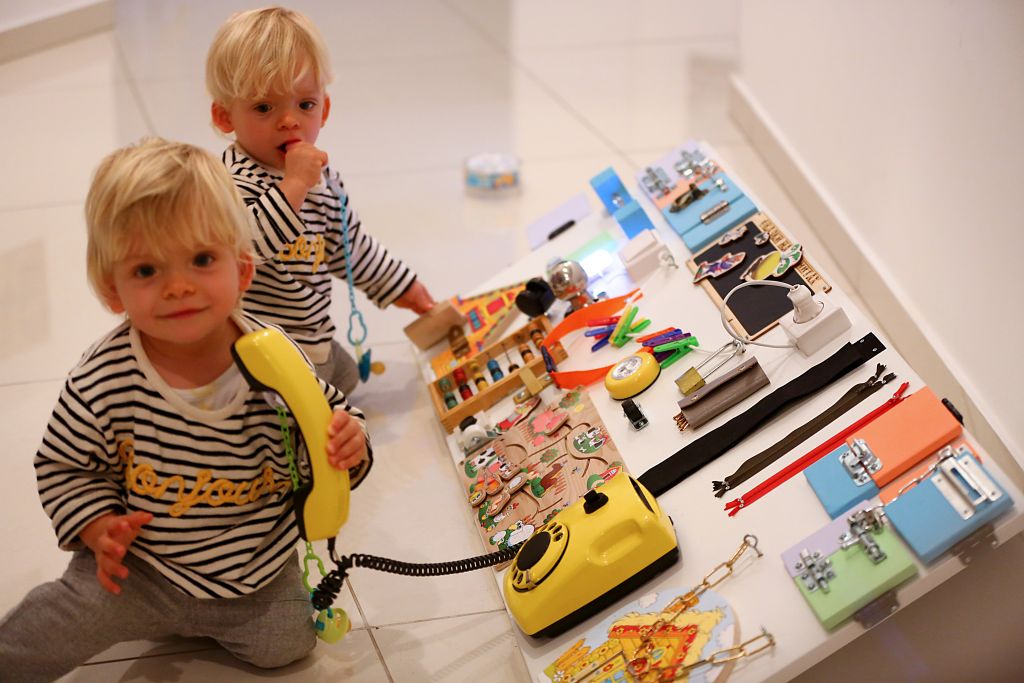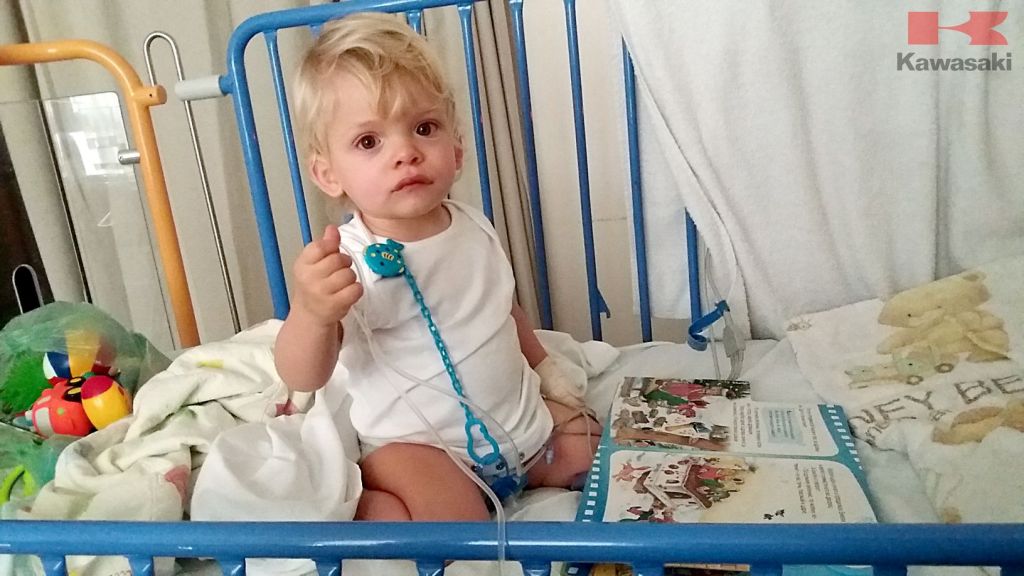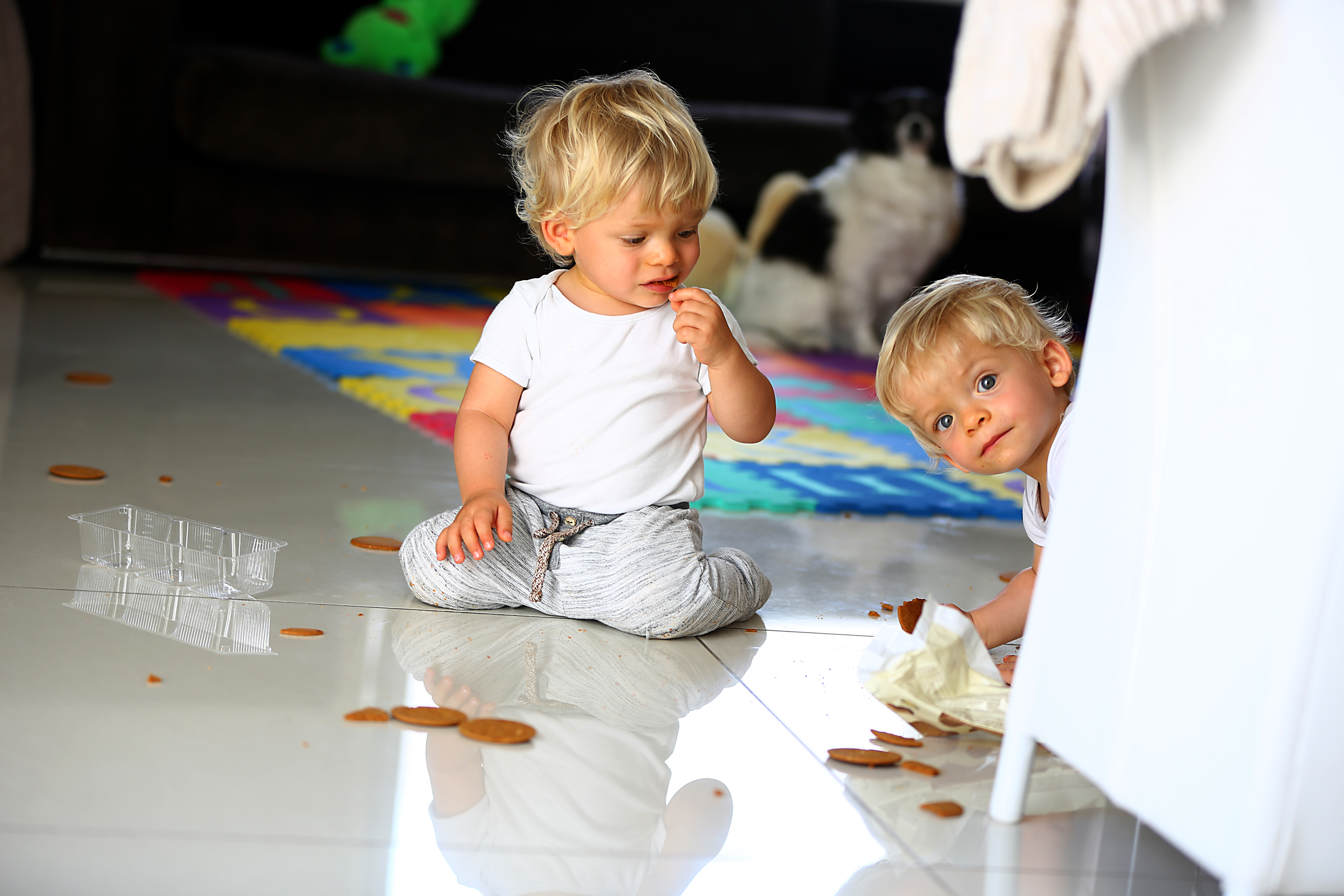When Michael Jr was 18 months old, he got seriously ill – it was Kawasaki disease. Our family had to go through a lot of suffering, but having defeated the disease, we got a grave experience and can give others a detailed account of it now. It’s a dangerous and severe disease that is often mistaken for a common URTI and treated the same way, therefore serious complications arise then which a person suffers from through the whole life. Furthermore, we had a chance to see in all detail how medical services are organized in Cyprus and how qualified local doctors are.
Until the age of one, the boys were healthy and didn’t fall ill at all despite the fact that they both had been born prematurely. There were neither colds nor viral diseases, so our first year in Cyprus was quite calm and brought us no worries in this regard.
When the boys turned one, they started to be out on the street more often, spend time in the playgrounds, contact with other children. Besides, the winter came, which brought a wave of endless diseases with itself. They began to catch colds in October and were taken ill over and over. First, one of the boys gets ill, and then, in a couple of days, the other one. They both were ill for one and a half or two weeks, and after a short respite (just about several days), it started over again. We lived like this through the whole winter, and it was naturally very exhausting for all of us.
We were startled by the frequent colds, as Cyprus has a mild and rather comfortable climate, which should supposedly be good for children’s health. However, it seemed to harm more than help. Our paediatrician explained us that the vicinity of Africa plays a negative role here, because African winds bring sand together with myriads of pathogenic bacteria and viruses. Moreover, the absence of temperatures below zero lets many microorganisms stay alive, while in other countries, they die in winter.

A couple of days before the appearance of Kawasaki disease in our lives
In April, when the boys were almost 18 months old, they fell ill again and were up and about several days after, as usual. However, the usual healthy break didn’t follow. Right after the recovery, Michael Jr was taken ill again. He suddenly started to have a high fever and was very weak – the toddler couldn’t do anything, he was just lying all the time and didn’t even get up to play. We decided it was a common URTI. But the following day, new symptoms appeared. The palate, tongue, and the whole oral mucosa got red. We noticed that at once but thought it was some kind of irritation or allergy. However, when our boy’s lips started to swell up, we were seriously worried and immediately phoned our paediatrician. She listened to us, gave us a couple of recommendations and asked to call her next day to tell her how the symptoms were developing and how the child felt. During the talk, we spotted the doctor being alert, although she calmed us down saying, “It’s unlikely to be something serious, it seems to be another virus, we just need to watch the process.”
By the end of the second day of illness, Michael Jr’s eyes got red, he refused to eat and drink. We forced him to drink from a teaspoon by droplets. He had a high fever, and ordinary medication – Ibuprofen and Panadol – made him feel better only for some time without reducing the fever. We were very anxious and scared, so we called the doctor again. Her words were truly dismal this time, “I have a suspicion the boy might suffer from Kawasaki syndrome, but I hope it’s a common virus.”
That’s how we found out about Kawasaki syndrome that changed our lives dramatically.
The next day, Michael Jr’s condition got worse – the eyes and mouth got redder – though we had thought that it can’t possibly get worse. The fever was still high, and a lymph node on the neck swelled up – a huge painful bump grew up, which was so big that a child wasn’t able to turn his head.
Our doctor advised us to go to hospital immediately.
Who is Kawasaki?
When we first heard about the disease, we certainly started to look it up. That’s what we discovered.
Tomisaku Kawasaki, a Japanese paediatrician, was first to describe the symptoms of the disease in 1961 that was later named after him. The causes of Kawasaki syndrome are still unknown. Some assume that the disease is caused by the infection transmitted by a retrovirus. Others believe that some germ of indefinite origin is dispersed by wind. It may be bacteria, fungi, and other microorganisms.

Michael Jr in the hospital
The most horrible thing is that Kawasaki disease attacks mainly little kids aged 1-5. Older children and adults suffer from the disease very rarely.
The disease cases can be found in different parts of the world, however, it’s considered to be rare, so many doctors have difficulties diagnosing it correctly. By the way, before Dr Kawasaki, the disease used to be called differently – mucocutaneous lymph node syndrome.
If doctors know so little about Kawasaki, the majority of people have never heard of it at all and have no idea what it is. Parents think that their child has caught a common cold, as many symptoms are the same. Kawasaki disease disguises itself as an ordinary upper respiratory infection that is not taken seriously. And that poses a significant risk – a child is ill for two weeks, sometimes more. All symptoms disappear then, sometimes even without treatment. And no one has the slightest suspicion that the person came through a severe illness that leaves grave complications in many cases.
Kawasaki syndrome affects the heart and coronary arteries which can manifest itself in a couple of years. Everyone knows that a heart attack has got “younger.” A teenager or a very young person lives and then suddenly dies from a heart attack. And no one recollects that he or she had a “cold” in the early childhood, which was actually no cold, but a virulent Kawasaki disease.
In the middle of the 20th century, medical statistics wasn’t so well-developed as today. Nevertheless, Dr Kawasaki managed to trace the connection between a “long-playing” cold in the childhood and a high rate of premature mortality due to heart failure.
Kawasaki found a certain number of symptoms that can help to recognize the new disease. Later, doctors learned to make a precise diagnosis according to his method, observing the manifestation of the symptoms. The understanding of the complications arising as a result of the illness was even more important. It’s a cardiovascular system that primarily gets affected. In layman’s terms, the heart vessels are gradually dying.
We read that the disease is most frequently found in Asia. The largest number of children fall ill with it in Japan. Thirty times more representatives of a Mongoloid race had the disease than any other races. We estimated the statistics and applied it to our case: 80% of sick children are under the age of three, boys fall ill one and a half times more often than girls. We got more and more scared.
We also found out that Dr Kawasaki identified five major symptoms of the disease. In fact, there are more of them, but if the five main ones are present, it’s definitely Kawasaki disease. The cases of catching the malady are very rare in European countries. Thus, when we urgently brought Michael Jr to hospital in Larnaca and told the doctors about our suspicions, no one took our words seriously. The doctors pondered, “A high fever, red eyes, the boy has a red mouth. It’s unlikely to be Kawasaki.” Nevertheless, Helen and Michael Jr were left at hospital taking into account the toddler’s condition.
To be continued…






Leave A Comment